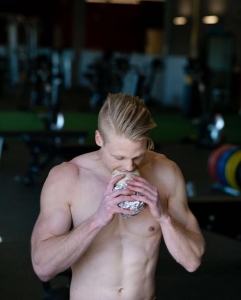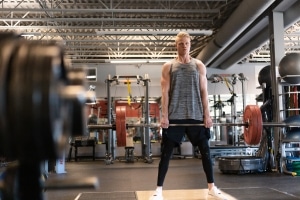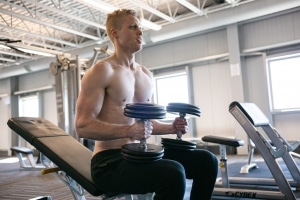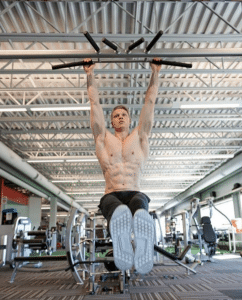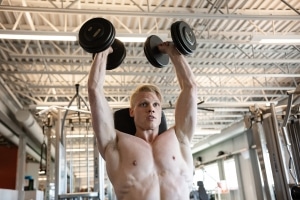Master The Movement Hierarchy
June 10, 2019
Have you spent years in the gym NOT getting jacked, but hammering away at the pec dec and calf raise machine, all for no #gainz?
I get it. I’ve been there, too. But no longer.
There is so much information out there that it’s easy to get overwhelmed instead of building a high-performance body.
What’s a ‘bro to do? How about doing something uncharacteristic: listening to people smarter than himself, like Dr. John Rusin, who speaks of six foundational movement patterns.
- Squat
- Hinge
- Lunge
- Push
- Pull
- Anti-movement
The idea here is training movement patterns, rather than focusing too much on training specific muscles in isolation.
By training each of these movement patterns, you end up training every major muscle group in your body.
“Do I need to throw in a set of rear-foot elevated cable tricep kickbacks to make sure I worked my triceps properly this week?”
As long as you check all the movement pattern boxes, you’re straight. Simply implementing each pattern 1-2 time per week will help you build a strong, well-balanced body.
The Secret To Getting Jacked
Applying the foundational movement patterns makes your training much more efficient. This forces you to implement lots of compound movements like squats, lunges, and chin ups.
Compound movements are the missing muscle-building component of the average gym goer’s program. Too many people focus too much on isolation exercise like dumbbell curls (and extra douche points for doing the curls in the squat rack, of course.)
Sooo squat, bench, deadlift, get jacked. Is that it?
Well…no.
The problem is, we all have different injury histories, movement restrictions, and goals. Simply applying the foundational movement patterns as a “one-size-fits-all” approach is a terrible idea.
There’s a very clear hierarchy here of what movements you need to have mastered first before moving on, as well as what movement patterns you should devote the most sets to.
I call it a movement hierarchy.
Master it and you’ll have fewer aches and pains with whatever life throws at you. And you’ll feel stronger and more capable than ever.
Tier one of the movement hierarchy is your most foundational movements. If you want health and longevity in and out of the gym, master these.
These are also the patterns and muscle groups that you should train the most because they truly create the foundation for a healthy, pain-free body the moves well and performs well.
The posterior muscles (the muscles on the backside of your body) are key stabilizers to the most frequently injured and unstable joints in your body:
- Your upper back musculature stabilizes the shoulder joints
- Your hamstrings stabilize your knees
- If your glutes are weak, you’ll compensate with your low back.
A weak posterior increases your odds of experiencing pain and potentially injury around one of these joints.
Call me a ‘bro, but, dammit, I love me my bench presses. You too? Thought so. 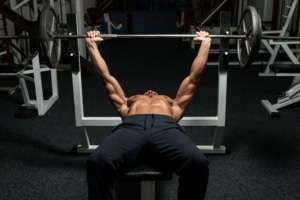
So the thing is, most of us love to push (think: bench press, overhead press.) Pushing trains our anterior musculature: chest, delts, quads: the fun stuff you can watch yourself train in the mirror.
But when it comes to pulling (which works the muscles on the backside of your body)...meh. Those muscles are harder to feel and harder to see. Out of sight, out of mind.
Typical office jobs that have you sitting at a desk with a slouched forward posture makes things worse. You tighten all the anterior musculature. So most of us have a pretty significant anterior > posterior muscle imbalance, which frequently shows up as low back and shoulder pain.
It’s like training your skills in Runescape. It’s super fun to train your melee, killing goblins and shit, but sometimes you also need to train your woodcutting.
Or so I hear. I’ve… err.. never played Runescape.
Anyways, it’s easy to train anterior > posterior muscles to the point of imbalance. But it’s very hard to do the opposite: get the posterior too strong relative to the anterior.
In fact, if you’re struggling to improve a push movement, it’s likely spending a bit of time focusing on your pull muscles will help.
The Row (Horizontal Pull)
Here, you’re training your upper back.
A strong upper back is a key to shoulder health and stability. If you’re benching a lot, you need to be rowing a lot more. Most likely, 2-3 times more, in fact. But your mileage may vary.
The upper back is also important for pulling the shoulders back into the “correct” posture.
(Don’t @ me with the whole “there is no correct posture thing”… if you’re a trainer and your client comes in asking for help improving their posture, rows will help.)
Another common issue? Tight upper traps. 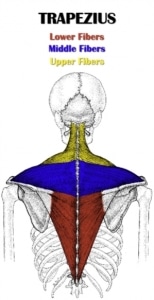
Do you constantly have to pivot your head around to try to “loosen up your neck”? Then listen up.
Often, this is caused by an imbalance between the upper and lower traps.
Most of us have a tendency to be “upper trap dominant.” When we pull something towards us, we use primarily those muscles, instead of the mid and lower trap muscles. This leads to the upper traps consistently getting stronger and tighter, and the lower traps getting weaker.
Learning to row correctly – by pulling the shoulder blades back and down, using the muscles of the mid and lower traps – can be a game changer if you’re someone with tight traps.
Mastering the rowing movement builds a strong foundation for a healthy, pain-free upper body. And this doesn’t have to be just plain old barbell rows and dumbbell rows, which get real old, real fast.
Recommendations:
→ Train one barbell rowing variation weekly with a focus on progressive overload. Prioritize increasing the weight here (while maintaining good form, of course), for 3-5 sets in the 3-6 rep range.
Good options here:
- Barbell Rows
- Pendlay Rows
- Trap Bar Rows (these are amazing)
*Note – The sets and reps ranges prescribed through this article are broad ranges that typically lend themselves well to the corresponding movements. For best results, apply some type of periodization to your training.
→ Choose 2-4 more rowing variation. Increasing weight is still a priority here, but slow these down, and focus on feeling your upper back work as well. 3-4 sets of 8-15 each. Here, you’re free to add a lot more movement variety and have fun with your training.
Good options:
- Dumbbell Rows
- T-Bar Rows
- Kroc Rows
- Meadows Rows
- Cable Rows
- Seal Rows
→ If you feel compelled to row more, fill the rest of your rowing work with lower intensity movements like:
- TRX Rows
- ½ Kneeling Rows
- Face Pull Variations
- Band Pull Aparts
Once you see how your body changes when you focus on rowing, you’ll be addicted. It adds a whole new element of “thickness” to your upper back that you were missing before, and changes how your physique looks entirely. Plus, your shoulders will feel amazing with all the upper back work you’re doing.
The Hinge
The hinge movement pattern is great for the hamstrings, glutes and potentially the back and core.
Strong glutes are a MUST if you ever want to lift heavy weight. When the glutes aren’t strong enough to do their job on a movement like a squat or deadlift, that means more of the work is forced on the surrounding areas, usually your lower back.
In general, the hinge pattern is where people most often report tweaking their lower backs. The usual culprit is either:
a) You don’t know how to hinge properly
b) Your glutes are weak OR you’re not recruiting them when necessary.
In terms, all of us can relate to…
Learning how to hinge properly sets you up for a lifetime of being able to safely pick heavy dogs up from the floor, free of back pain. It’s essential to the overall quality of life.
Recommendations:
→ Choose one hinge variation you can load up heavy. Train this once per week, 3-5 sets in the 3-6 rep range. Again, the goal here is to push heavy weight and get crazy strong at the movement. I would stick to the same movement for quite a while here. Just vary the rep ranges and loading schemes.
Good options here:
- The Classic Barbell Deadlift
- Trap Bar Deadlift
- Elevated Deadlift
- Sumo Deadlift
*Note – You don’t have to do conventional deadlifts. We all have different anatomies, injury histories, and goals. If the conventional deadlift doesn’t work for you, it’s all good. You can still get really damn strong with the hinge pattern using one of these variations.
→ Choose two more hinging movements for the week. These should be moves that put significantly less stress on your low back than the first hinge. Try to work in at least one single-leg variation. Train these for 3-4 sets of 6-10 reps. Again, you can incorporate more variety here.
Good options here:
- Barbell and Dumbbell Romanian Deadlifts
- Hip Thrust and Glute Bridge Variations
- Single-Leg Romanian Deadlifts
- Rear Foot Elevated Romanian Deadlift
- Staggered Stance Romanian Deadlift
- Staggered Stance Hip Thrust
Mastering the hinging pattern can be frustrating at first. It feels much less natural than the squat. But as you master it, you’ll learn to love it. This will almost always turn into your strongest movement. Nothing feels better than being able to pull hundreds of pounds more than your bodyweight off the floor.
Plus, most hinge variations are great for the entire backside. Get strong at your preferred deadlift variation, and in the process, you’ll grow strong and muscular glutes, hamstrings, and upper back.
Anti-Movement
We all love to do tons of spinal flexion exercises: crunches, leg raises, and the like. And these are great movements for building thicker abs.
The thing is, when we’re training spinal flexion, we’re not effectively training our core for its essential function: resisting movement to stabilize your spine and pelvis under load.
The ability to use your core to resist movement is key to a strong deadlift, squat, and even overhead press. Very often the limiting factor keeping you from being as strong as you could be on your compound movements is the core.
Anti-movement encompasses anti-extension, anti-lateral flexion, and anti-rotation movements.
You probably cringe when you think of doing a boring-ass set of planks. I get it. I do, too. But the truth is, anti-movement training doesn’t have to be boring at all.
There are so many dope and unique anti-movement exercises out there that you haven’t tried. By combining a few, you can easily create a brutally effective core + conditioning circuit to finish your workout with.
Recommendations:
→ You can train anti-movement a lot without any recovery issues. Try to work at least one of each of the following categories into your program weekly. 3-4 sets of each. 8-10 reps OR 30-45 seconds of work.
Anti-Extension: The goal here is to resist extension at the spine. A few options:
- Ab Wheel
- TRX Fallout
- Renegade Row
- Hollow Body Sweep
- Hollow Body Flutter Kick
- Hollow Body Holds
Anti-Rotation: The goal here is to resist rotation at the spine. A few options:
- Pallof Press Holds
- Renegade Row
- Swiss Ball Stir-The-Pot
- Birddog Row
Anti-lateral flexion: The goal here is to resist sideways bending at the spine. A few options:
- KB Bottoms Up + Farmers Walk
- Chaos Farmer’s Walk
- Suitcase Carries
- Farmer Carries
If you take the time to build a solid foundation with the Tier One movements, you’ve essentially made your body bulletproof. Your posterior will be crazy strong and muscular (a rarity), and you’ll have insane core strength. This is the base you’ll make tons of pain-free gains from in the future.
Tier Two trains muscles opposite of the Tier One muscles. You’re going to be smoking the anterior muscles: chest, back, shoulders, quads, etc.
These are super fun movement patterns to train. Just make sure you’re hitting you’re Tier One patterns more than Tier Two.
Squat
A strong squat is one of the most well-respected feats in the gym because truthfully, it’s a damn hard movement.
That said, with the brutality that is an intense squat session comes some major changes to your body.
Now, the squat has a somewhat undeserved reputation as a glute builder. It’s really a much more quad-dominant movement for most people. For those with a quad > hamstring imbalance. This is a common cause of low-back pain, and squatting more will make the issue worse, so just make sure you’re prioritizing your posterior work.
Recommendations:
→ Choose one squat variation to train weekly with a focus on progressive overload. Use 3-5 sets in the 5-10 rep range.
You’re best served when you don’t switch this up often. These barbell squat variations especially are very technical and take a lot of skill to master. So if you switch up the movements too often here, you’ll never master the skill enough to effectively apply progressive overload. So again, just vary the rep ranges and loading schemes.
Good options here:
- Barbell Back Squat
- Barbell Front Squat
- Bulgarian Split Squat
- Landmine Squats
→ From here, choose 1-2 more squat patterns to train for 3-4 sets in the 8-12 range. Lunge variations (see Tier Three) work best here for most people.
Similar to the deadlift, you don’t have to force feed convention barbell back squats into your training program. Find the variation that works the best for your anatomy, injury history, and goals, and get really damn strong at it.
Horizontal Push
“How much do you bench ‘bro?”
If you’re anything like me, you’ve probably spent an unproportionate amount of time training your horizontal pushes – bench press, push-ups, more bench press, bench press again, etc.
Getting strong at the bench is super fun. It’s the number one metric dudes use to compare where they’re at in the gym. Plus, getting a crazy chest pump makes you feel like a barrel-chested Viking King and is straight up one of the most gratifying feelings in the gym.
Any type of horizontal push is going to be excellent for hitting your “push” muscles: the chest, shoulder, and triceps.
Recommendations:
→ Work different angles. Your horizontal presses shouldn’t just be barbell flat bench. The different angles and equipment will hit the chest with a novel growth stimulus, and be easier on your shoulders than just constantly flat benching.
→ You’re best advised to choose 2-3 movements here to train twice per week. I’d do one movement with a focus on pushing heavy weight, with something like 3-5 sets of 5-8 reps.
With the other 1-2 movement(s), focus on lifting very intentionally, owning every bit of the movement with something like 3-4 sets of 8-15 reps. I’d also focus on working dumbbell movements into the mix frequently.
Good options here:
- Flat Bench Press
- Low Incline Bench Press
- Incline Bench Press
- Dips (bodyweight and weighted)
- Floor Presses
- Single-Arm Presses
→ Do 2-3 times more sets of rowing than horizontal pressing. The number one problem most guys run into by their late 20’s? Beat up shoulders from years of benching too much. The solution is often as simple as putting more emphasis on the rowing pattern.
→ Learn how to keep your shoulders packed. This is key to keeping your shoulders pain-free while pressing. All that back muscle you’ve built from rowing won’t do much if you’re not using it properly when benching. 3DMJ Legend Brad Loomis explains it better than I do:
Vertical Pull
Get strong at vertical pulls, and you’ll feel like an absolute badass. Repping out weighted chin-ups with 100lbs makes you feel pretty damn strong. (Plus it looks hilarious walking around with the weight swinging between your legs.)
You’re training your upper back here again, but this time you’re working from overhead.
These are above rows on the movement hierarchy, because many people don’t yet have the ability to move their scapulae correctly when pulling. This results in other muscles doing the work, and shoulder pain. The rowing motion is easier to be master first and carries over well to the vertical pull.
Recommendations:
→ You’re best served by training the vertical pull 2-3 times per week. 3-5 sets, 5-15 reps.
Here, I’d focus on varying weight and intensity throughout the week. Your pull-up and chin-up variations (especially when they progress to weighted) are better suited to the 4-8 rep range.
Your pulldown variations are better suited to slightly higher rep ranges (8-15), with more emphasis on the mind-muscle connection.
Basically:
- If you work a wide grip pull-up on Monday, work a neutral grip pulldown on Thursday.
- If you train a higher intensity movement on Monday (e.g. 3×5 weighted close-grip chin-up), go lower intensity, higher rep, and different grip on Thursday (e.g. 3×10-12 wide grip lat pulldown.)
- Body Weight And Weighted Pull-Up and Chin-Up Variations (a great test of true strength)
- Lat Pulldown Variations
- Straight-Arm Pulldowns
Truly, most people could train only the first two tiers and get great results. By mastering them, you’ll build a crazy strong foundation and pack on pounds of dense muscle.
Lunge
From a “functional” viewpoint, the ability to do things with one leg at a time is very important.
The squat and hinge are great movements. The thing is when training both movements at the same time (bilaterally), often one leg will be doing more of the work than the other, without you realizing it. This compounds over time to form imbalances, and potential pain and injury.
On the same note, if you have back issues, training the lower body hard enough to spark muscle and strength gains becomes a challenge. All the stress put on your spine from a heavy set of back squats is a recipe for disaster for a tender low back.
This is where unilateral (single-leg) work like lunges is a gamechanger. It allows you to load the legs super heavy, while also drastically reducing the amount of stress that you put on the spine.
Say you can’t progress past 225×6 on your back squat without tweaking your low back.
You decide to load up the split squat movement heavy and find that you can rep out 70lb dumbbells in each hand for 6, without back pain.
When you squat 225, you’re basically hitting each leg with ~112.5lbs. With split squats, you’re hitting each leg with 140lbs, but with much less stress on your back. It’s a win-win. Unilateral movements allow you to create a GREAT training effect for the lower body, without loading the spine to the degree necessary with bilateral squat variations.
Most of us do have issues that spring up with squatting bilaterally too often. The movement also has“functional carryover,” meaning it improves balance and stability more than bilateral squats. So your unilateral work is really interchangeable with you squat movement pattern. The only reason the squat is lower on the movement hierarchy is. If you can’t squat on two legs, you’re screwed on one.
From real-world experience, the lunge variations (e.g. Bulgarian splits squats, reverse lunges) will often make more sense for your goals and lifestyle than bilateral squats , once you’ve developed the prerequisite balance and strength.
Recommendations:
→ If you’re doing a bilateral squat pattern, do 1-2 of these movements per week, 3-4 sets of 6-12/side. If you’re replacing the bilateral squat with one of these, obviously add a third movement.
Great options here:
- Bulgarian Split Squats
- Front Foot Elevated Split Squats
- Reverse Lunges
- Deficit Reverse Lunges
- Step-Ups
- Walking Lunges
Vertical Push
Pressing overhead is probably the best way to apply progressive overload to your shoulders and build stronger, more muscular delts.
Problem is, we just don’t do things overhead much in our day-to-day life. So if you haven’t been training properly, you’ll likely be lacking the mobility you need to get overhead.
For those with past shoulder injuries or mobility restrictions, a combination of horizontal presses and lateral raise variations will still allow you to build great delts. There’s no need to force the movement if you’re not capable of training it without pain.
That said if you’re good to press overhead, get after it. My personal all-time favorite movement is the barbell overhead press. Not only is it a great way to build a powerful-looking set of shoulders, but I’d argue it’s one of the most functional movements out there. If you can press hundreds of lbs overhead, rest assured, you have strong shoulders, core, back, and even lower body.
Recommendations:
→ Train the vertical press 1-2 times per week, 3-4 sets in the 6-10 rep range.
→ Make sure at least one of your weekly movements here is a dumbbell or unilateral variation, as strictly barbell pressing wears on most people’s shoulders quickly.
→ If you’re pressing overhead twice per week, train one day where you’re pressing overhead after your bench press variation. Seated, single-arm, and ½ kneeling variations work well here. Also train one day where you’re going overhead before benching. Barbell overhead presses work well here.
Since the front delts are involved heavily in your bench press AND overhead press, this sets you up to build strength on both patterns more evenly.
Good options here:
- Barbell Overhead Press
- Dumbbell Seated Shoulder Presses
- Z-Press
- Arnold Press
- ½ Kneeling Landmine Press
- Kettlebell Bottoms-Up Press
You’ll get 90%+ of the results sticking in Tiers 1-3. Those are always the bread-and-butter of your training. For a lifetime of gains, prioritize the first three tiers.
Tier four consists of your isolation exercises. Think of these more as a way to add volume to specific muscles, rather than movement patterns.
Thing like lateral raises, bicep curls, chest flys, leg extensions, cable crunches, calf raises.(It’s the thought that counts, right?)
Isolation exercises won’t stimulate nearly as much growth as the movements from the first three tiers. So put these at the end of your workout.
Recommendations:
→ Choose 2-4 isolation exercises to put at the end of your workout. These movements can be specific to weak points, or whatever you want to bring up.
Do 2-4 sets of 10-20 reps. Focus on the mind-muscle connection and feeling the burn.
And that’s the hierarchy. Train with this system, and you’ll build a lean, strong, and resilient body that moves well, and feels amazing.
Ready to take the hierarchy from theory to application?
Click here for a FREE training program designed to get you leaner and stronger than ever, while also teaching you how to successfully apply the movement hierarchy to your training.
ABOUT THE AUTHOR
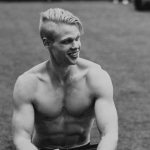 Jeremiah Bair is the biggest Taylor Swift fan in Lincoln, Nebraska. He’s also a certified nutrition coach, fitness writer, and owner of the Online Coaching Business Bairfit. His Instagram is notable for the absence of any calf pictures.
Jeremiah Bair is the biggest Taylor Swift fan in Lincoln, Nebraska. He’s also a certified nutrition coach, fitness writer, and owner of the Online Coaching Business Bairfit. His Instagram is notable for the absence of any calf pictures.



